
The lowdown on leashes for river surfing
Leashes on the river are a double edged sword. When you fall, they help you get back on your board (which is the safest place to be), and they keep you from damaging or completely losing your board. Leashes can also be encredibly dangerous in certain situations. If you, your board, or your leash gets caught on anything you could get held under water.
Imagine this worst case scenario: you’re out surfing with one end of your leash connected to your board and the other strapped to your ankle (as you would ocean surfing). You fall and get flushed off the wave. As you get carried down river, your board ends up on one side of an exposed rock and you on the other. The leash goes tight, and holds you in place with your foot upstream and head downstream. The force of the water rushing over your body pushes you underwater. You cannot reach your ankle to unstrap your leash, because the water is too strong. Unlike the ocean you cannot simply wait for the wave to pass over you to get some relief from the hydraulic forces holding you under. You are in a life threatening situation. Wearing a leash around your ankle is a foot entrapment waiting to happen.
Luckily you can mitigate this problem by wearing a releasable leash attached to your body within arms reach. In this post I’ll go over the different types of leashes and how each can be used safely in the river.
Standard Ocean Leashes
This is your standard surf leash.
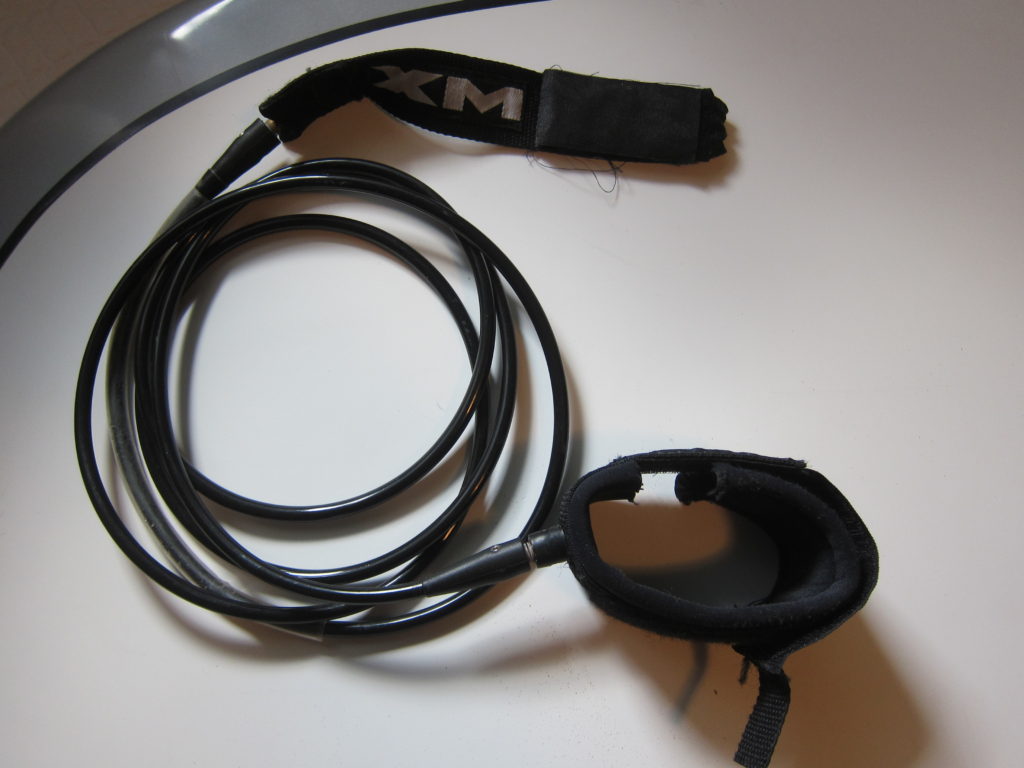
It attaches to your ankle or calf using a Velcro strap.
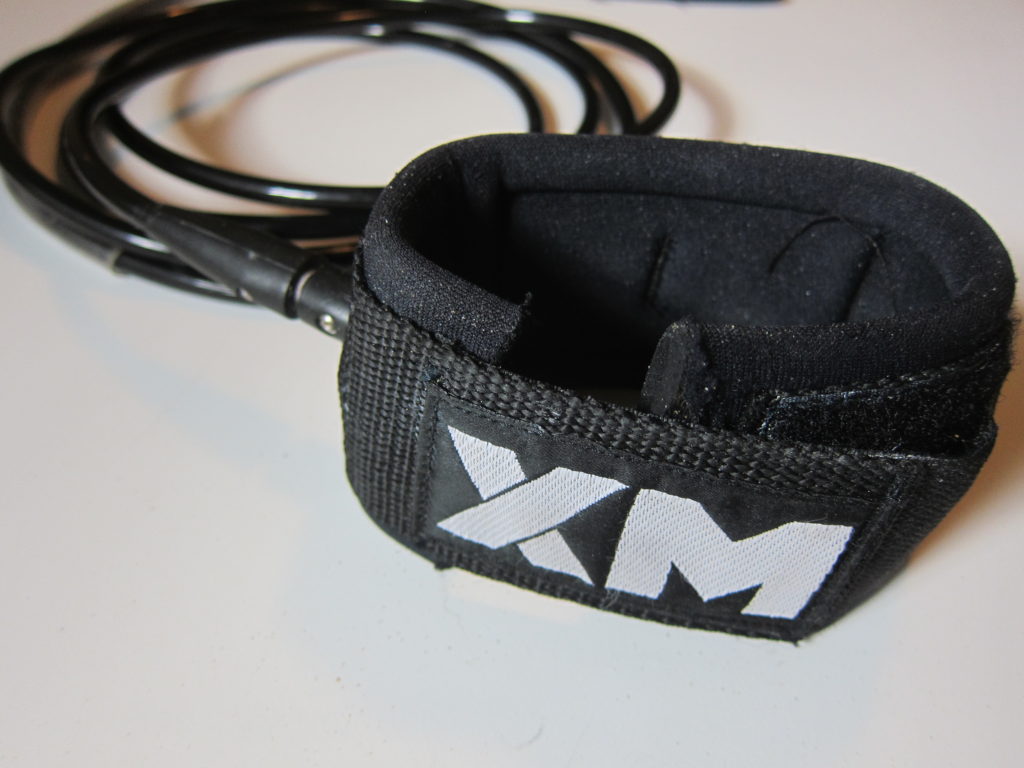
When attached to your ankle, this leash is very dangerous for the river. The only safe way to use this type of leash is to attach it to a rescue PFD with a releasable belt (like these from Kokatat) or to wear a standalone quick release belt and attach the leash to it (http://www.coloradokayak.com/Astral-QR-Rescue-Belt). With these releasable belts, you can pull a strap or tab and release the belt from your body and swim free of your leash and board.
Releasable Ocean Leashes
These leashes are identical to regular ocean leashes except they have a pull tab that disconnects the strap from the cord. If you get in a bad situation, you can pull the tab and float free of your board.
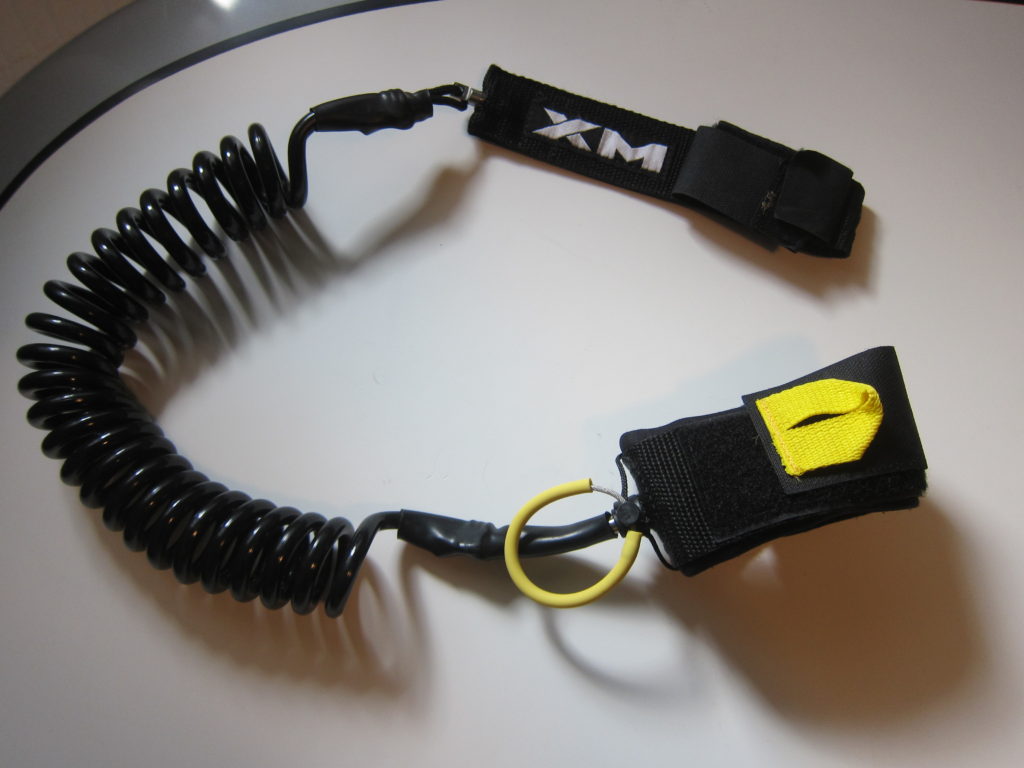
On this leash the yellow hoop is the emergency release tab.
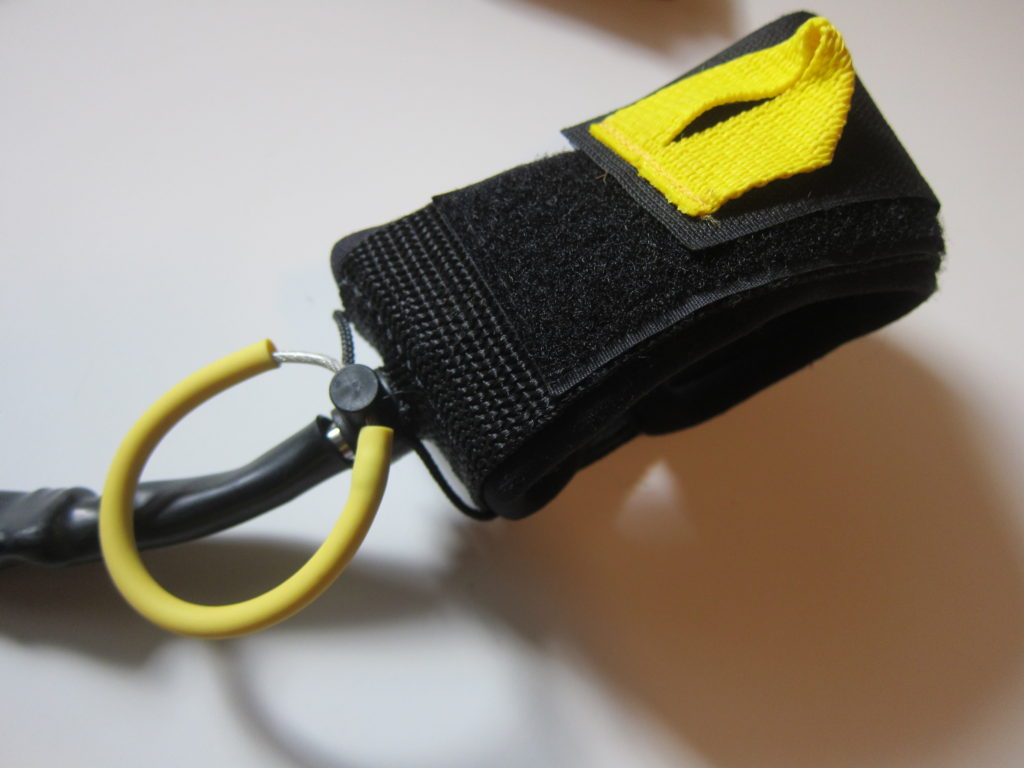
The one problem is these leashes still attach to your ankle. If you are held under water in a river, you will not be able to reach your ankle to pull to tab. The only safe way to use one of these leashes is to attach it to a more easily reachable spot. A strap on the side of your PFD usually works well.
Waist/chest Strap Releasable Leashes
These leashes are designed for river use. Instead of attaching to your ankle, you strap them around your waist or chest. They have an easy to operate release mechanism. Since it connects around your chest or waist it’s always within reach if you get into trouble.
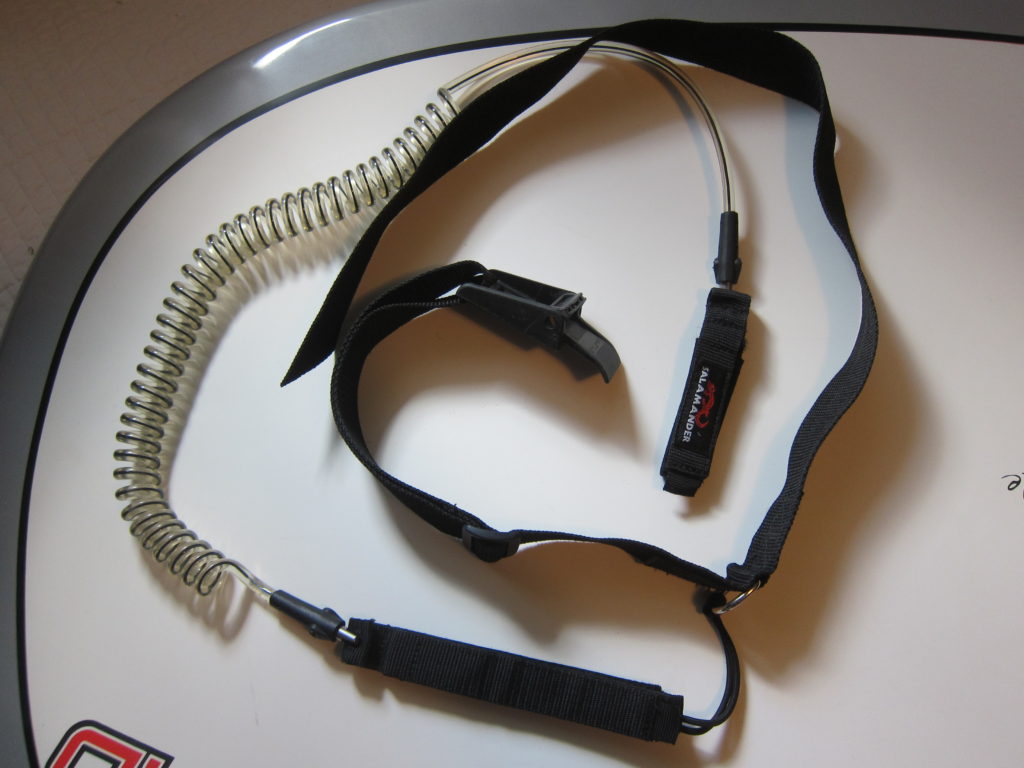
The mechanism to release these leashes is identical to the ones found on rescue PFDs with releasable belts or standalone quick release belts. You pull the end of the belt or a pull tab away from your body, and the belt releases.
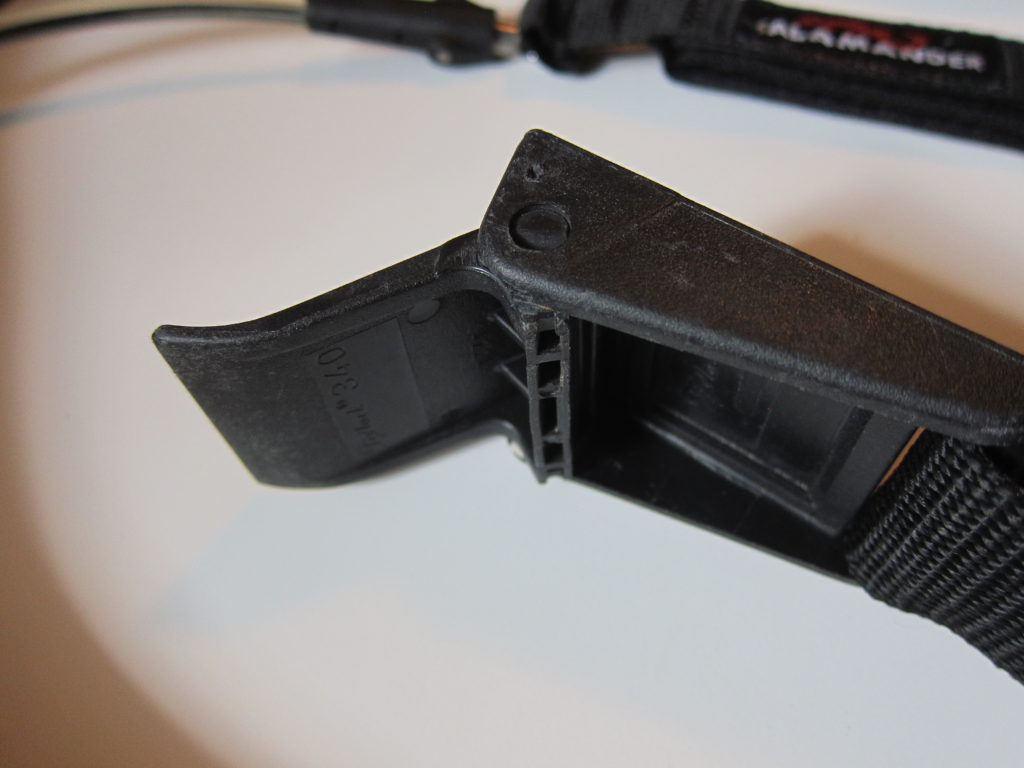
These leashes are good, but I dislike them for one reason. The strap is like a belt around your waist or chest. This strap can potentially shift, slide and rotate around your body when you go for a swim. When it moves, the release mechanism moves as well. In the heat of the moment you want to know EXACTLY where you emergency release is.
Carabiner Connected Releasable Leashes
Like the waist strap leash, these leashes are specifically designed for river use. They connect to your body, via a carabiner clipped to an easy to reach spot on your PFD.
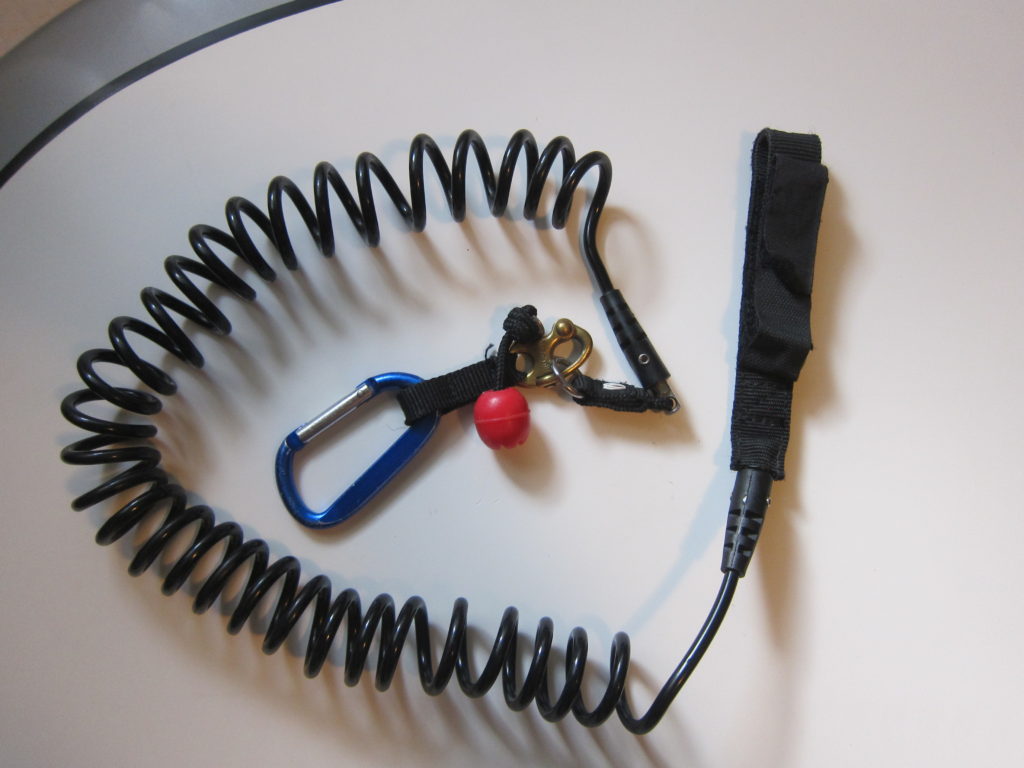
To release this leash, you pull on the red ball.
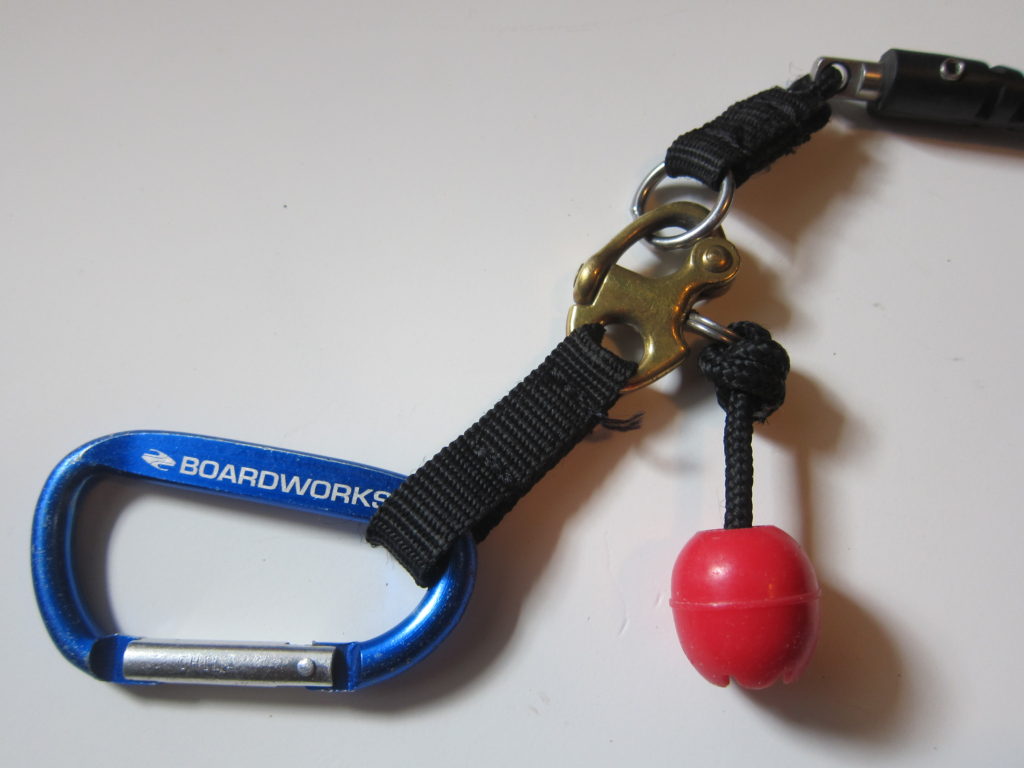
These are the leashes I prefer. The red ball is easy to feel for, it never shifts or changes location, and the release mechanism is smooth and easy to operate. Badfish makes a couple sizes of these, and are what I use almost exclusively.
UPDATE: A few people have mentioned that it is a good idea to check your Badfish ReLeash before getting in the water. Cold enough weather to freeze, or dirt could cause the release mechanism to lock up and make it difficult to release. One person also mentioned that sometimes the leash will appear to be locked, but then will release at the slightest tug. I haven’t had any of these issues, but it’s always a good idea to check your safety gear before getting in the water.
Going Leash-less
Some people feel that this is the safest option. It is impossible to have your leash get tangled on anything if you’re not wearing one. I think there are situations where leash-less paddling is the best choice, but it requires you have strong paddling buddies down stream of you to catch your board when you fall.
…short vs long leashes
Once your choose the type of leash you want to use, you’ll need to decide on how long you want it to be. My current feeling is the for river surfing the longer the leash the safer you’ll be. This idea is a bit counter intuitive and have no real evidence to back it up, but here’s my experiences when comparing a 6′ vs 11′ leash.
- I’m more likely to smack myself in the face/head with the board using a 6′ leash
- It’s easier to step over an 11′ leash while surfing when it gets wrapped around your legs
- It’s easier to untangle yourself from an 11′ leash when swimming
- A 6′ leash will help keep your board from hitting rocks
So my preference is to use my 11′ Badfish Re-leash except when it’s super low/rocky water, then I’ll switch to the 6′. What’s are you using?
UPDATE 1: Here’s another good article from on using leashes in the river http://riverbreak.com/how-to/guides-and-tutorials/your-life-on-a-leash-ankle-leashes-will-kill-river-surfers/
UPDATE 2: This is a good intro video on when to use various leashes and PFDs for different kinds of SUP: river, flat water, ocean, etc:
UPDATE 3: Here’s a scary account of a near drowning caused by a leash http://riverbreak.com/news/breaking-news/near-drowning-highlights-importance-of-river-surfing-safety/
I use a Badfish with coiled leash. Btw I disagree that no leash would be the safest option. Depends a bit on the river. Swimming in real whitewater can dangerous, so you want to minimize that, and loosing your board can get you in a dangerous situation as well…
I agree with you. I almost always use a leash, but I also understand people’s reasoning around not wearing one. I think the best choice is to always wear a leash, but realize that you need to evaluate (in the back of your mind) each run, rapid, hole and drop and decide if it is potentially safer to go leash-less.
Great summary of different leash options that will help spark discussion on wearing a leash in real whitewater. We’ve a couple of articles dealing with leashes in river surfing at: http://riverbreak.com/how-to/guides-and-tutorials/your-life-on-a-leash-ankle-leashes-will-kill-river-surfers/ ALOHA and stay safe in the river!